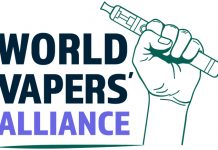Press Release
Global policymakers urged to seize potential of safer nicotine products to reduce smoking-related death and disease: failure to do so will cost many lives

- New GSTHR report documents the search for safer ways to use nicotine, beset with false starts, and charts the history of tobacco harm reduction
- Emergence of new safer nicotine products has caused substantial disruption to nicotine use, public health and tobacco control institutions, and the traditional tobacco industry
- Mistrust and ideological opposition is hampering widespread adoption of a strategy that could help 1.1 billion adult smokers failed by existing tobacco control interventions
Today sees the launch of The Global State of Tobacco Harm Reduction 2022: The Right Side of History, the latest in a landmark report series from UK-based public health agency Knowledge Action Change (KAC) (1,2).
The new publication charts the history of tobacco harm reduction to date, and considers the future of a strategy that can hasten the end of smoking and drastically reduce smoking-related death and disease worldwide.
Smoking-related diseases are not caused by nicotine, but by the thousands of chemicals released when tobacco burns.
The Right Side of History explores how the past two decades have witnessed substantial disruption to patterns of consumer nicotine use, public health narratives, the work of tobacco control institutions and traditional tobacco industry interests, due to the emergence of new products that independent evidence shows are substantially safer than cigarettes and can support smoking cessation.
These products include nicotine vapes, tobacco-free nicotine pouches, Swedish-style snus and heated tobacco products.
The global public health crisis caused by smoking is ongoing and deadly.
Despite the billions spent to date on tobacco control by the World Health Organization (WHO) and governments around the world, international tobacco control measures have stalled.
1.1bn people still smoke, a figure that has remained unchanged for two decades. 80% of the world’s smokers live in low- and middle-income countries (LMIC), and every year, eight million people die of smoking-related disease. By 2100, the WHO estimates that one billion people will die as a result of smoking.
Large scale substitution of deadly combustible cigarettes with much safer nicotine products can significantly reduce the death and disease caused by smoking.
The Right Side of History explores the development of this approach, known as tobacco harm reduction.
Harm reduction is an evidence-based public health intervention grounded in human rights that reduces health risks by giving people safer alternative products or encouraging less risky actions, not by banning products or actions.
It developed in the 1980s as part of the response to HIV/AIDS and has already saved countless lives. The report argues that, integrated into the global response to tobacco, harm reduction has the potential to save many more.
The Right Side of History documents the lengthy search for safer ways to use nicotine, which was beset with many false starts.
Throughout the 20th century, tobacco companies repeatedly made attempts to create and heavily promote ‘safer’ cigarettes, but the products remained deadly, and industry deceptions laid bare in the 1990s led to significant legal and financial consequences.
By the 1970s, health researchers and clinicians had recognised that if consumers could access palatable safer alternatives to smoking, the toll of smoking-related death and disease could be reduced.
The Swedish experience, which saw the substitution of cigarettes with pasteurised snus from the 1980s onwards, began to provide large-scale epidemiological evidence of the population-level health benefits of a switch away from combustible tobacco to less harmful nicotine products.
Exploring the role of individual innovators who were working outside both the tobacco industry and public health, The Right Side of History charts numerous attempts to create safer nicotine products.
It was at the start of the 21st century that Chinese pharmacist Hon Lik developed the electronic cigarette, or nicotine vaping device. Within a few years, thousands of people around the world began sharing personal experiences of switching from smoking to vaping products in online forums.
The report evidences the growth of supportive vaping communities, both on the internet and in person, and describes the birth of consumer advocacy, when regulatory authorities in some countries began considering vaping product bans.
Many countries have gone on to enact prohibitive regulations or outright bans, while countries that regulate safer nicotine products to protect consumers, ensuring proper testing, assessment, and control (including prevention of sale to children) have seen increased reductions in smoking rates. In 2022, combustible cigarettes remain legal worldwide.
Mistrust was seeded by the late entrance of the traditional tobacco industry into the safer product market.
The report argues that scrutiny and debate about new products and nicotine-using behaviours is essential. But with public health and policymakers split over tobacco harm reduction’s role, ideologically driven opposition to the approach has led to the spread of mis- and disinformation. Meanwhile, over a billion adult smokers continue being harmed by cigarettes.
If integrated into the global public health response to tobacco, effective harm reduction can help bring about substantial reductions in smoking-related death and disease at pace and at minimal cost to governments and health agencies.
A major disruptive force is at play: GSTHR estimates show that in two decades, 112 million people have begun using safer nicotine products. But consumer uptake is currently concentrated in higher income countries.
The Right Side of History argues that to achieve the greatest public health gains, and ensure no one is left behind, everyone who smokes should have the right to access lower risk products proven to be among the most effective tools for cessation.
While the WHO Framework Convention on Tobacco Control explicitly includes harm reduction, the strategy has been ignored in implementation to date. In light of new developments in nicotine consumption, and in consideration of the fundamental human right to health, harm reduction now can and should be incorporated into international and national tobacco control efforts.
Harry Shapiro, author of The Right Side of History, said:
“Technology helped smoking become one of the world’s biggest health problems. Now, technological innovations from beyond both the tobacco industry and public health have combined to produce safer nicotine products, and millions of people who smoked have already chosen to switch. Yet progress is being hampered. Although disruption is not always comfortable, the genie is out of the bottle – these new technologies demand the development of new policies and new thinking.”
Professor Gerry Stimson, GSTHR Project Lead, Emeritus Professor, Imperial College London, said:
“A failure to recognise and exploit the potential of tobacco harm reduction will mean millions more avoidable deaths each year, and contribute to an ever-growing burden of disease that disproportionately affects the most vulnerable countries and communities.
Tobacco control’s lack of evolution, despite its very limited gains, means that many aspirational targets to achieve smoke-free status by 2030 or within the next generation are no more likely to be met than former aspirations for a drug-free world. Tobacco harm reduction offers us an historic opportunity. We must not let it slip away.”
The Right Side of History is the third in the biennial series of Global State of Tobacco Harm Reduction (GSTHR) reports, following No Fire, No Smoke in 2018 and Burning Issues in 2020. Alongside the biennial reports, GSTHR Briefing Papers and other publications, the GSTHR also delivers a free-to-access global database enabling users to explore tobacco harm reduction and safer nicotine product use on a country-by-country basis.
Produced with the help of a grant from the Foundation for a Smoke-Free World, Inc., the GSTHR Project and all of its outputs are editorially independent of the Foundation, under the terms of the grant agreement.
Contact: For further information please contact Ruth Goldsmith, GSTHR Communications Lead, at ruth@kachange.eu or on +44 78 01 84 51 92
About us:
Knowledge·Action·Change (K·A·C) promotes harm reduction as a key public health strategy grounded in human rights. The team has over forty years of experience of harm reduction work in drug use, HIV, smoking, sexual health, and prisons. K·A·C runs the Global State of Tobacco Harm Reduction (GSTHR) which maps the development of tobacco harm reduction and the use, availability and regulatory responses to safer nicotine products, as well as smoking prevalence and related mortality, in over 200 countries and regions around the world. For all publications and live data, visit gsthr.org
Our funding:
The GSTHR project is produced with the help of a grant from the Foundation for a Smoke-Free World, an independent, US non profit 501(c)(3) which, under US law, must operate independently of its donors. The project and its outputs are, under the terms of the grant agreement, editorially independent of the Foundation.





